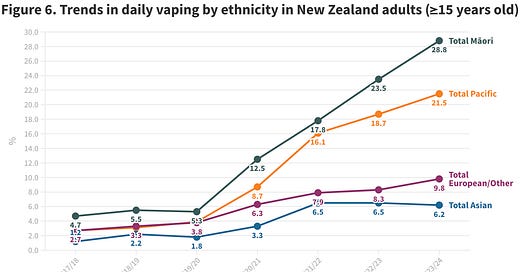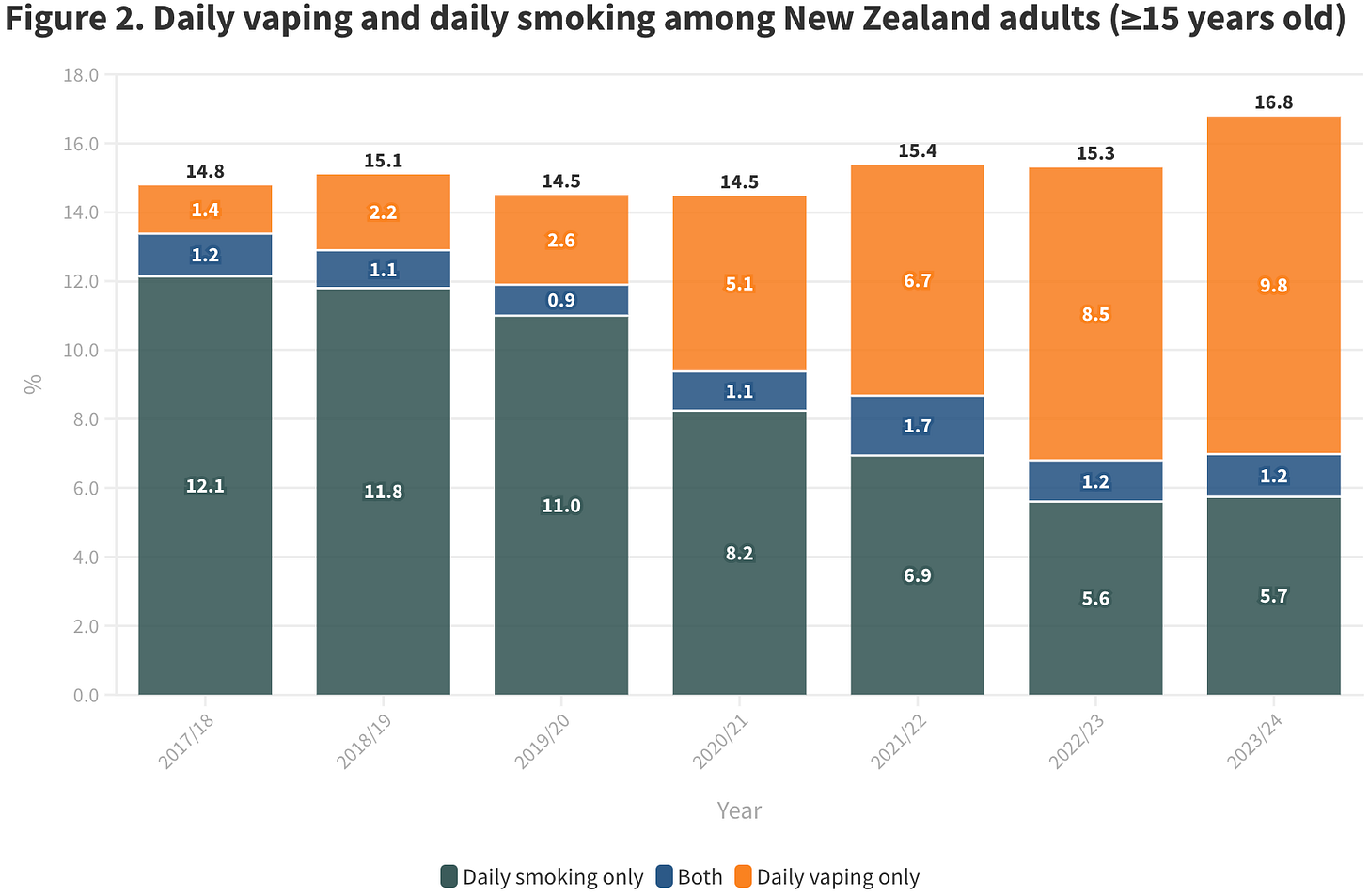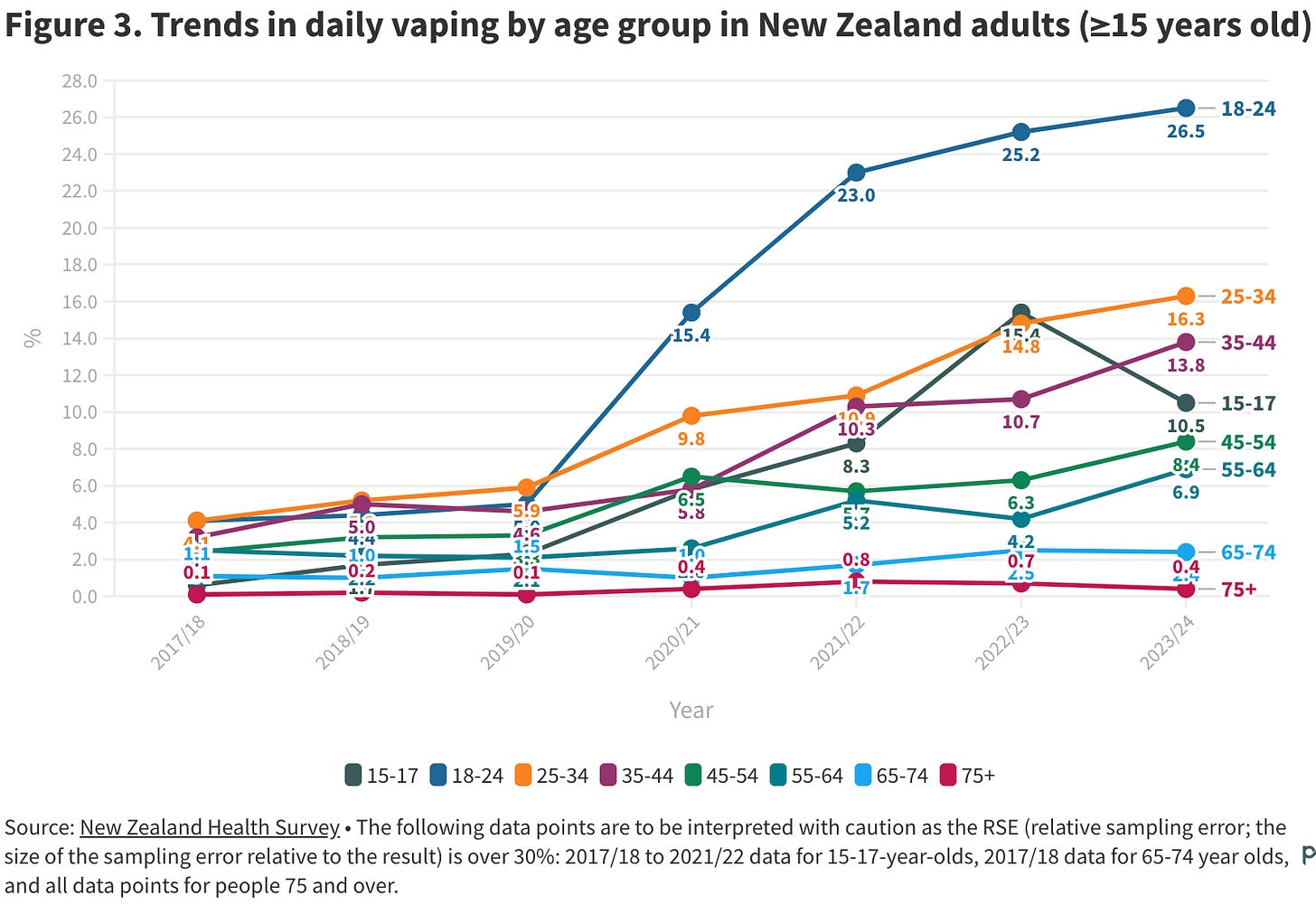🍀 Improving Mental Health Care Access, Making Homes Healthier, HNZ Finances, Understanding Youth Vaping, and More
Māori health research highlights from the past week
👋🏽 Kia ora, I’m George Gray, a public health physician doing my best to keep up with the latest health research to help improve outcomes for Māori.
The topics covered this week include:
Māori mental health patients gain better care
Making homes healthier saves money and lives
Audity of indoor air quality
Understanding youth vaping helps create solutions
Interpreting HNZ’s 23/24 financial performance
✅ Take the newsletter quiz, & download a professional development certificate.
📊 View the life expectancy dashboard & ask the chatGPT chatbot a question.
🔬 The Latest Research
🏥 Are Mental Health Patients Getting Equal Care in Primary Healthcare?
tldr: Māori with mental health conditions face compounded inequities in primary care experiences.
Cunningham, R., Artus, J., Imlach, F., Stanley, J., Haitana, T., Lockett, H., Peterson, D., & Gerard, C. (2024). Primary care experience in people with mental health conditions: Results from a national patient experience survey. New Zealand Medical Journal, 137(1606).
This comprehensive study analysed 201,650 primary care patient experiences in Aotearoa, revealing significant challenges in healthcare experiences for people with mental health conditions, particularly Māori. While 21% of respondents reported having mental health conditions, they consistently experienced poorer care across multiple dimensions. The impact was amplified for Māori, who faced compounded inequities. The research showed that people with mental health conditions were 7.1% more likely to report problems accessing appointments and 3.6% less likely to have their individual needs met. The researchers suggest that healthcare providers can improve outcomes for those with mental health conditions by implementing patient-centred approaches, addressing stigma through tailored programmes, and establishing equity targets specifically focused on Māori mental healthcare experiences.
📊 Chart of the Week
📈 Vaping Surges Among Young People - The 2023-24 New Zealand Health Survey has revealed that daily vaping rates have reached concerning levels among Māori, with 28.8% of Māori adults now vaping daily - nearly three times higher than non-Māori when adjusted for age and gender.
Daily vaping has risen dramatically from 3.5% in 2019/20 to 11.1% in 2023/24.
Particularly high rates are seen among young adults aged 18-24 years (26.5%) and those living in deprived neighbourhoods.
These findings highlight the urgent need for stronger regulations that protect non-smokers, especially young people while maintaining access for those using vapes to quit smoking.
✅ In Brief
📝 Annual Report Published - Health New Zealand | Te Whatu Ora (HNZ) released its 23/24 Annual Report, which outlined its financial and non-financial performance results. Page 193 shows a deficit of $1,013 million for 22/23 (before property revaluations) and a deficit of $722 million in 23/24. This report is prescient because it shows that while HNZ’s financial position in 2023/24 has been reported negatively, the underlying operational performance actually improved by $291M when you remove the one-off property revaluation accounting adjustment from 2022/23. I’ve charted these figures below.
The $722m deficit for 23/24 was due to:
Personnel Costs: The largest overspend at $797M over budget
Clinical Supplies: Second largest variance at $537M over budget
Outsourced Personnel: $257M over budget
External Providers: $144M over budget
Infrastructure & Other: $110M over budget
Outsourced Services: Actually under budget by $122M
🏠 Healthy Homes Initiative Delivers Major Health Benefits - The Healthy Homes Initiative (HHI) has demonstrated remarkable success in improving health outcomes for vulnerable whānau, with a new five-year evaluation revealing an 18.6% reduction in hospitalisations among participants. The programme has supported over 186,000 people to live in warmer, drier homes, and showed a significant positive return on investment of 507% through healthcare savings. Beyond health benefits, the initiative also improved social outcomes, including increased school attendance and employment opportunities, particularly benefiting Māori and Pacific communities who comprised the majority of participants.
🌬️ Ventilation Study Reveals Mixed Air Quality in Our Buildings - A comprehensive study of 99 rooms across 31 buildings has found varying levels of ventilation effectiveness, with about one-third of spaces showing good air quality while others required improvement. The research was conducted by NIWA for the Ministry of Health and highlighted concerns in gyms and educational spaces, where CO2 levels frequently exceeded recommended thresholds (800 ppm). While the study revealed significant potential for improving ventilation through behavioural changes, it emphasises the need for targeted interventions and monitoring systems, especially in spaces occupied by vulnerable populations.
🏥 Global Health Systems: USA Lags Despite Highest Spending - The Commonwealth Fund's Mirror, Mirror 2024 report reveals a stark contrast in healthcare performance across 10 high-income nations, with Australia, the Netherlands, and the United Kingdom leading while the USA ranks last despite spending the most on healthcare. Aotearoa performed well on some health system performance metrics but was ranked second lowest for equity of access (Equity was defined as “how people with below-average and above-average incomes differ in their access to health care and their care experience.”)
📕 Future Plans Published - Health New Zealand | Te Whatu Ora (HNZ) also published its Statement of Intent for 2024-2028. This document outlines HNZ’s medium-term strategic intentions - what it would like to achieve over the next four years. It also published its Statement of Performance Expectations. This document outlines the organisation’s financial and non-financial performance intentions for the 2024-25 financial year.
⚡️ Lightning Quick
🔢 Here’s a quick dashboard I created that summarises the Q4 Health New Zealand - Te Whatu Ora performance report mentioned above. Results for the Māori population are summarised and interpreted.
🎬 End Notes
📈 Could you please answer a quick question? I’d really like your feedback. Click this link and tell me: How likely are you to recommend this newsletter to a friend or colleague?






This insight is incredible and so appreciated.